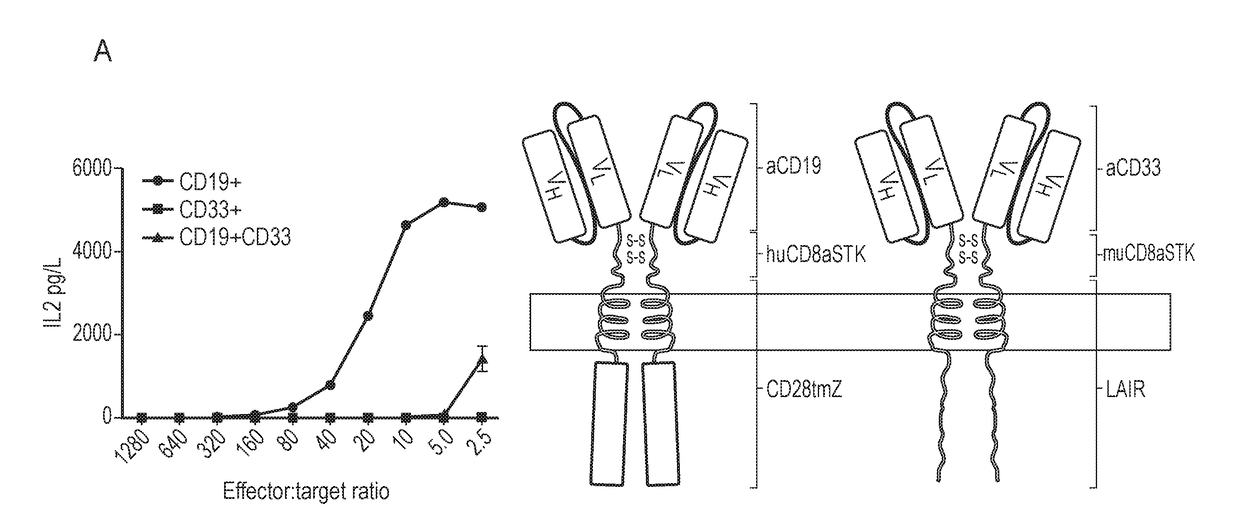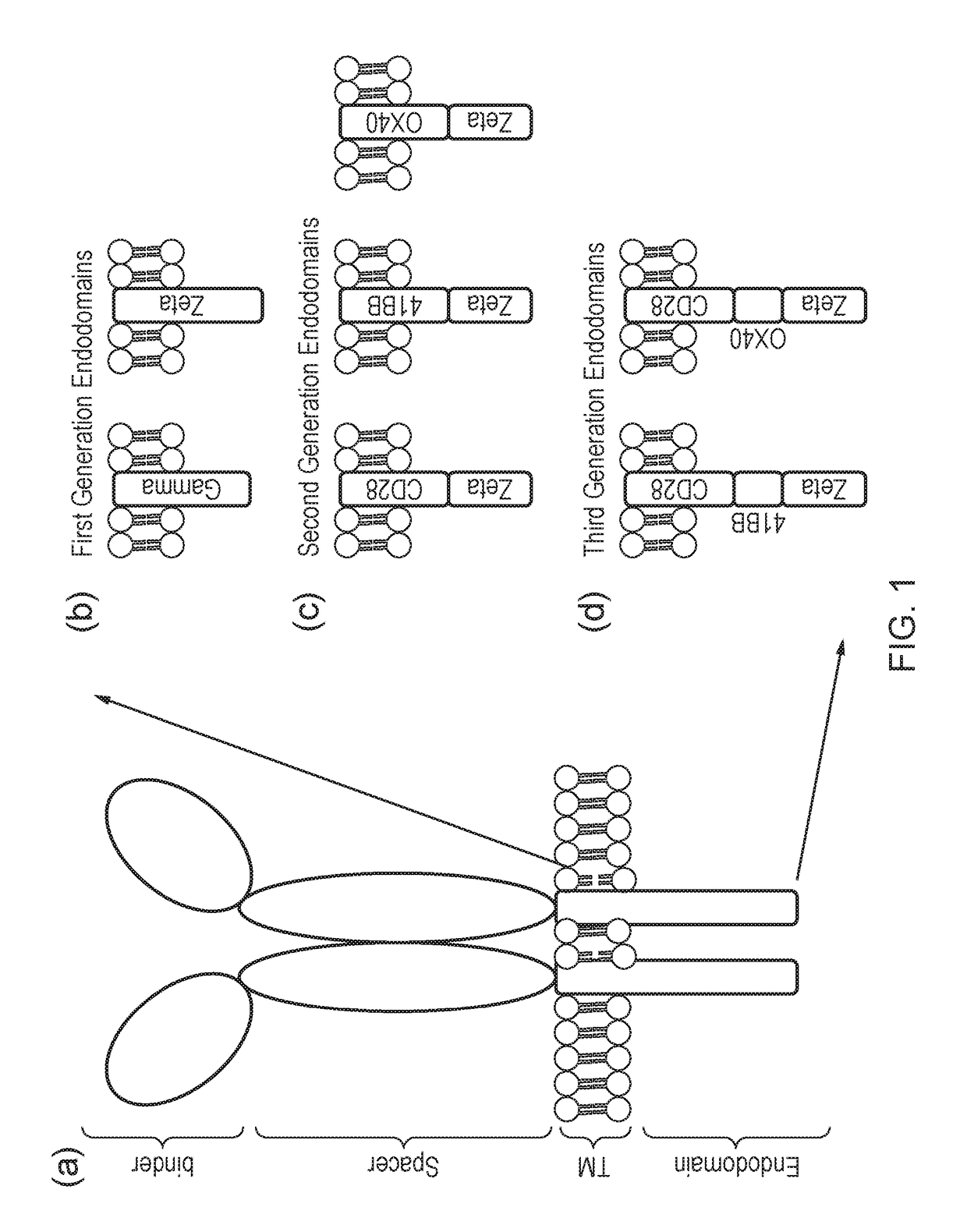Nucleic acid construct for expressing more than one chimeric antigen receptor
a chimeric antigen and construct technology, applied in the field of nuclear acid constructs and approaches for expressing more than one chimeric antigen receptor, can solve the problems of large “on-target off-tumour” toxicity, lack of specificity, and damage to normal tissues,
- Summary
- Abstract
- Description
- Claims
- Application Information
AI Technical Summary
Benefits of technology
Problems solved by technology
Method used
Image
Examples
example 1
of Target Cell Populations
[0362]For the purposes of proving the principle of the invention, receptors based on anti-CD19 and anti-CD33 were arbitrarily chosen. Using retroviral vectors, CD19 and CD33 were cloned. These proteins were truncated so that they do not signal and could be stably expressed for prolonged periods. Next, these vectors were used to transduce the SupT1 cell line either singly or doubly to establish cells negative for both antigen (the wild-type), positive for either and positive for both. The expression data are shown in FIG. 3.
example 2
d Function of an AND NOT Gate
[0363]Phosphatases such as CD45 and CD148 are so potent that even a small amount entering an immunological synapse can inhibit ITAM activation. This is the basis of inhibition of the logical AND gate. Other classes of phosphatases are not as potent e.g. PTPN6 and related phosphatases. It was predicted that a small amount of PTPN6 entering a synapse by diffusion would not inhibit activation. In addition, it was predicted that if an inhibitory CAR had a sufficiently similar spacer to an activating CAR, it could co-localize within a synapse if both CARs were ligated. In this case, large amounts of the inhibitory endodomain would be sufficient to stop the ITAMS from activating when both antigens were present. In this way, an AND NOT gate could be created.
[0364]For the NOT AND gate, the second signal needs to “veto” activation. This is done by bringing an inhibitory signal into the immunological synapse, for example by bringing in the phosphatase of an enzyme...
example 3
tal Proof of Kinetic Segregation Model of PTPN6 Based AND NOT Gate
[0368]The model of the AND NOT gate centres around the fact that the nature of the spacers used in both CARs is pivotal for the correct function of the gate. In the functional AND NOT gate with PTPN6, both CAR spacers are sufficiently similar that when both CARs are ligated, both co-localize within the synapse so the high concentration even the weak PTPN6 is sufficient to inhibit activation. If the spacers were different, segregation in the synapse will isolate the PTPN6 from the ITAM allowing activation disrupting the AND NOT gate. To test this, a control was generated replacing the murine CD8 stalk spacer with that of Fc. In this case, the test gate consisted of two CARs, the first recognizes CD19, has a human CD8 stalk spacer and an ITAM endodomain; while the second CAR recognizes CD33, has an Fc spacer and an endodomain comprising of the phosphatase from PTPN6. This gate activates in response to CD19, but also act...
PUM
| Property | Measurement | Unit |
|---|---|---|
| nucleic acid | aaaaa | aaaaa |
| structure | aaaaa | aaaaa |
| hydrophobic | aaaaa | aaaaa |
Abstract
Description
Claims
Application Information
 Login to View More
Login to View More - R&D
- Intellectual Property
- Life Sciences
- Materials
- Tech Scout
- Unparalleled Data Quality
- Higher Quality Content
- 60% Fewer Hallucinations
Browse by: Latest US Patents, China's latest patents, Technical Efficacy Thesaurus, Application Domain, Technology Topic, Popular Technical Reports.
© 2025 PatSnap. All rights reserved.Legal|Privacy policy|Modern Slavery Act Transparency Statement|Sitemap|About US| Contact US: help@patsnap.com



